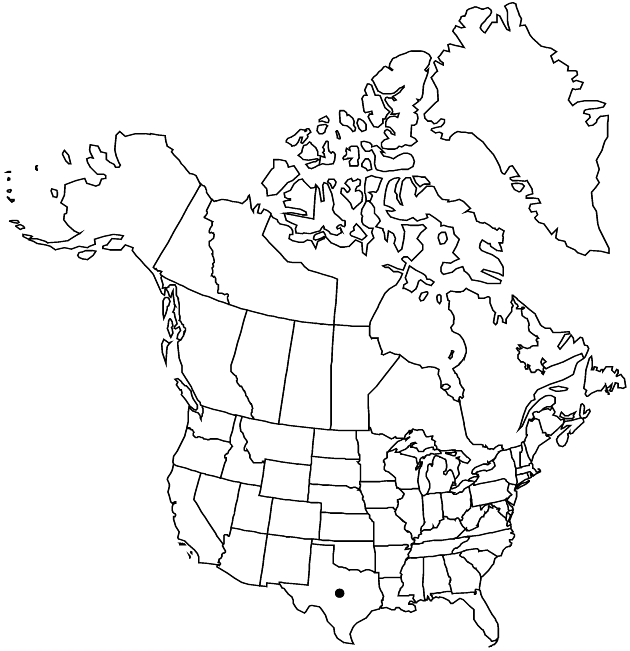Difference between revisions of "Perityle fosteri"
Madroño 30: 217, fig. 1. 1983.
Common names: Foster’s rock daisy
EndemicConservation concern
FNA>Volume Importer |
imported>Volume Importer |
||
| (6 intermediate revisions by 2 users not shown) | |||
| Line 8: | Line 8: | ||
}} | }} | ||
|common_names=Foster’s rock daisy | |common_names=Foster’s rock daisy | ||
| + | |special_status={{Treatment/ID/Special_status | ||
| + | |code=E | ||
| + | |label=Endemic | ||
| + | }}{{Treatment/ID/Special_status | ||
| + | |code=C | ||
| + | |label=Conservation concern | ||
| + | }} | ||
|basionyms= | |basionyms= | ||
|synonyms= | |synonyms= | ||
| Line 25: | Line 32: | ||
|distribution=Tex. | |distribution=Tex. | ||
|discussion=<p>Of conservation concern.</p><!-- | |discussion=<p>Of conservation concern.</p><!-- | ||
| − | --><p>Perityle fosteri, possibly a close relative of P. rupestris, is known only from Culberson County.</p> | + | --><p><i>Perityle fosteri</i>, possibly a close relative of <i>P. rupestris</i>, is known only from Culberson County.</p> |
|tables= | |tables= | ||
|references= | |references= | ||
| Line 34: | Line 41: | ||
-->{{#Taxon: | -->{{#Taxon: | ||
name=Perityle fosteri | name=Perityle fosteri | ||
| − | |||
|authority=A. M. Powell | |authority=A. M. Powell | ||
|rank=species | |rank=species | ||
| Line 48: | Line 54: | ||
|publication title=Madroño | |publication title=Madroño | ||
|publication year=1983 | |publication year=1983 | ||
| − | |special status= | + | |special status=Endemic;Conservation concern |
| − | |source xml=https:// | + | |source xml=https://bitbucket.org/aafc-mbb/fna-data-curation/src/2e0870ddd59836b60bcf96646a41e87ea5a5943a/coarse_grained_fna_xml/V19-20-21/V21_791.xml |
|tribe=Asteraceae tribe Heliantheae | |tribe=Asteraceae tribe Heliantheae | ||
|subtribe=Asteraceae (tribe Heliantheae) subtribe Peritylinae | |subtribe=Asteraceae (tribe Heliantheae) subtribe Peritylinae | ||
Latest revision as of 20:14, 5 November 2020
Plants 6–15 cm (forming mats on rock faces, profusely branched, leafy); short-hairy. Leaves: petioles 4–8 mm; blades ± ovate to deltate overall, 5–12 × 5–12 mm, 3-lobed, ultimate margins entire. Heads borne singly or in corymbiform arrays, 6–7 × ca. 4 mm. Peduncles 2–5 mm. Involucres funnelform-cylindric. Phyllaries ca. 8, linear-lanceolate, 5–6 × 0.8–1.3 mm. Disc florets ca. 10; corollas cream to pale yellow, tubes 1 mm, throats tubular-funnelform, 3 mm, lobes 0.5 mm. Cypselae 1.5–1.6 mm; pappi of ca. 20 bristles 1–2 mm. 2n = 34.
Phenology: Flowering spring–fall.
Habitat: Rock faces in protected canyons
Elevation: 1500–1660 m
Discussion
Of conservation concern.
Perityle fosteri, possibly a close relative of P. rupestris, is known only from Culberson County.
Selected References
None.
Lower Taxa
None.
